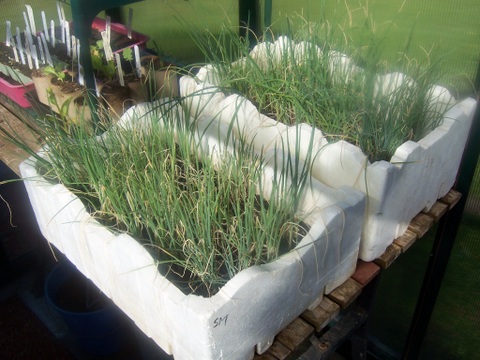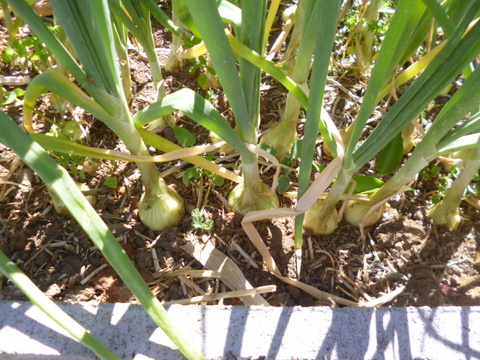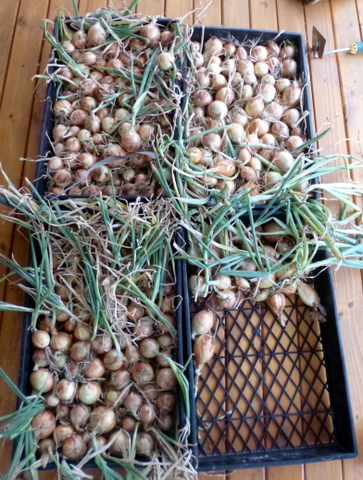For the past 10 years or so we have been growing a percentage of our own onions, the percentage being dependant on how well we have done that year, but usually upwards of 6 months’ worth. This is the process we use –
Sowing
In April each year we get hold of onion seed, usually white onions and the variety we like is Gladalan white although we have played with creamgold (a long storing variety) and also a red onion as well. We sow the onions into a couple of polystyrene foam veggie boxes, the ones with the drainage holes in the bottom not broccoli boxes.
To prepare the boxes for sowing I fill them up with plant materials such as pulled weeds, grass clippings etc. then add a 50cm layer of seed raising mix on top. The layer of seed raising mix compresses the vegetable matter, down so that the whole lot fits into the box. The idea of the vegetable matter is that because the seedling onions will be sitting in the box for months, the breakdown of the vegetable matter will provide nutrients over time for the seedlings (called sets) to grow.
I sow the seed fairly closely together and as evenly as I can by hand (that is to say, not very evenly at all!) over the surface of the seed raising mix. I then cover the seed with a thin layer of cocopeat, again by hand so that hopefully it will be uneven in the same concentration as the onion seed. I then tamp the surface down with a board to ensure good seed/soil contact. I then finish off by giving the whole thing a drenching with the watering can. The box will then sit in the greenhouse for the winter.
Planting Out
The seeds will germinate and continue to grow in the polystyrene veggie boxes until early to mid-September, by which point they will be roughly 200mm tall. I remove the sets from the box by hand and shake off any adhering soil and vegetable matter. I then cut the tops down to about 150mm long, to reduce the amount of transpiration while the roots get a hold in the new soil. I transplant them in rows about 75 – 100mm apart with about 25mm – 30mm between each plant within the rows. They get a good water and then I water them regularly and weed between the plants as required to keep the competition’s heads down! Due to the amount of onions we plant, I don’t do any interplanting in that bed, it is onions only.

I usually plant them into a standard veggie bed and we have gotten some good results over the years, but last year I planted into one of the beds under the 50% shade cloth cover. It may have been a coincidence but all of the onions were very small that year. So this year I went back to a veggie bed without a cover. Also this year, for the first time, then bed I planted into was provided with ollas (unglazed terracotta pots buried and kept full of water for irrigation) and the result was the biggest load of onions we have ever had, over 15 kg worth!
Harvest
The onions are harvested after the green leaves have fallen over and the onions have dried out a bit. This is usually late November to early December, depending on the year. I pull them up and leave them in the open for a few days for the skins to dry out, then put them away somewhere dry and cool. With the large number of onions we got this year that looks like being in the garage somewhere. We just continue to eat the onions as required and they usually last us well into winter. We’ll have to see how it goes this year.








